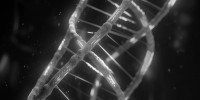
SPADE: Estimating Cell Type Proportions
Researchers have introduced a new reference-based method, SPADE, for performing cell type deconvolution of spatially resolved transcriptomics data. This method accurately estimates cell type proportions while considering the spatial structure of tissues, which is important for understanding normal tissue function and disease states.
Spatial transcriptomics is a powerful technology that enables the study of gene expression patterns in tissues with unprecedented detail. By identifying the specific location of gene expression, researchers can gain new insights into the complex relationship between gene expression and tissue architecture, which has significant implications for understanding normal tissue function and disease states.
However, current spatial transcriptomics technologies have limitations in yielding cell type-specific information within a tissue region, which prohibits the capture of complete gene expression patterns at single-cell resolution in space. To address this need, several spatially resolved cell type deconvolution methods have been developed, which can accurately estimate cell type proportions at each location.
While these methods are effective in estimating cell type proportions, they do not consider the relationship between spatial information and tissue structure. This is important because spatial structures can have a significant impact on biological functions. Therefore, there is a growing need for methodologies that can accurately depict and describe the spatial patterns of gene expression variations while accounting for the specificity of individual cell types and the tissue structure.
To address this limitation, researchers have now introduced a reference based method, SPADE, for performing cell type deconvolution of spatially resolved transcriptomics data:
 The SPADE algorithm defines the cell type deconvolution task as a constrained nonlinear optimization problem that seeks to find the best estimated proportion to minimize the overall relative error between the true gene expression and estimated gene expression with restriction by non-negativity and sum-to-one constraints.
The SPADE algorithm defines the cell type deconvolution task as a constrained nonlinear optimization problem that seeks to find the best estimated proportion to minimize the overall relative error between the true gene expression and estimated gene expression with restriction by non-negativity and sum-to-one constraints.
The SPADE method based on transcriptomics data
SPADE is a new reference-based method for performing cell type deconvolution of spatially resolved transcriptomics data. The method defines the cell type deconvolution task as a constrained nonlinear optimization problem that seeks to find the best estimated proportion to minimize the overall relative error between the true gene expression and estimated gene expression with restriction by non-negativity and sum-to-one constraints. SPADE adopts a three-step approach to estimate the cell type proportions within a spatial domain. In the first step, SPADE identifies the spatial domains and domain-specific genes within a tissue. The second step determines the number of cell types present within each domain, and the final step estimates cell type proportions for each spatial domain. SPADE was tested through simulations by comparing it to existing spatial deconvolution methods and applications to public spatial transcriptomics studies in different areas. The results show that SPADE consistently outperformed other methods with the lowest mean absolute deviation, root mean squared error, and the highest correlation across all simulations.
The authors also discuss the use of spatial transcriptomics and cell type deconvolution to study the development of the embryonic chicken heart. By combining spatially resolved RNA-seq with high-throughput single-cell RNA-seq, researchers were able to investigate the spatiotemporal interactions and regulatory programs driving embryonic chicken heart development. They were able to identify the cell types that were present in each region of the tissue, which provided insights into the biological processes occurring at the cellular level. The study found that the spatial organization of cell types varied across developmental stages and that the correlation between cell types increased over the stages of development. Overall, this study highlights the importance of spatial transcriptomics and cell type deconvolution in understanding the biological significance of tissues and organs.
 “Through the application of the SPADE algorithm on chicken heart development data, we acquired insights into the development of specific cell types throughout four stages of ventricular development. These findings provided valuable knowledge basis that can be extrapolated to inform future clinical studies.”
“Through the application of the SPADE algorithm on chicken heart development data, we acquired insights into the development of specific cell types throughout four stages of ventricular development. These findings provided valuable knowledge basis that can be extrapolated to inform future clinical studies.”